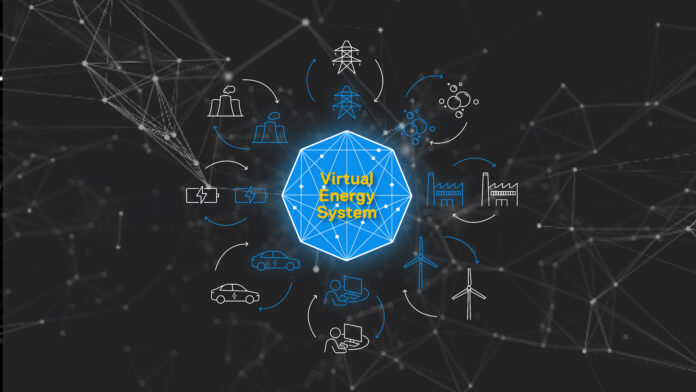To achieve our collective goals, we need to maximise the value of the right time data available to us, Carolina Tortora from National Grid ESO tells ICON readers in this thought piece.
Britain’s energy system is transforming. As we journey towards net zero emissions, the system is becoming more complex; as the energy transition continues, our system-management decisions will require more data sources, span more organisations and assets, becoming increasingly sophisticated.
In order to meet the government’s 2035 decarbonisation targets, energy management and ownership will become increasingly decentralised. Digitalisation will therefore be essential to deliver a stable, secure, and cost-efficient system.
This has been recognised by leaders across the sector, including the Energy Digitalisation Taskforce, which has called for a digitalised energy system – one that will allow better oversight of the UK’s energy needs to help navigate the growing complexities of the industry.
In response, ESO is spearheading the development of the pioneering Virtual Energy System for Britain. The Virtual Energy System will be an ecosystem of connected digital twins, enabling data sharing to drive innovation and deliver improved whole system decision making, helping accelerate the transition to a sustainable and decarbonised energy system.
Unlocking the value of the Virtual Energy System
Through the Virtual Energy System, every element of the British energy industry can publish their data onto a decentralised system. In return, they will get unprecedented access to the information and oversight of the entire industry, enabling innovative new solutions, powering ideas to cut real-world carbon emissions.
The insights generated by the Virtual Energy System will empower everyone to better keep pace with industry changes, open up new market opportunities, and drive innovation by enabling more transparency across the energy system.
As the Virtual Energy System facilitates greater interconnectivity and integration of different data, it will provide more detailed scenarios to inform better decision-making across the energy ecosystem. As part of this, a use case driven approach will demonstrate the value of the Virtual Energy System and ensure it is user and consumer centric.
An early use case, CrowdFlex, looks at how domestic flexibility can support the coordination of energy consumption, generation, and grid management. With this information we can project how the network functions today, and in the future, more accurately – for the benefit of both the energy system and electricity consumer.
The priorities for progress
Creating the Virtual Energy System is a socio-technical challenge, requiring a collaborative and principled approach, aligned with the National Digital Twin Programme. To support this, 14 socio-technical factors have been identified.
Among these, six priority factors will underpin the development of a robust common framework for the Virtual Energy System. From how we build a strong governance model that upholds the needs of the industry to how we ensure interoperability so that all data can communicate with the Virtual Energy System in a transparent and secure way, these factors will help actors to effectively unlock the power of a digital energy system.
The six priority factors will enable the accelerated development of the Virtual Energy System by demonstrating how data owners can set up their own systems to work as part of this industry-wide tool. They will also highlight the need for support across policymakers to create the best environment for secure data sharing across different industry sectors.
Creating a common data architecture
As the energy transition gathers pace, organisations breaking beyond traditional business models and individual organisational objectives can take advantage of the opportunities available through greater data sharing.
This will be supported by a common data architecture delivered through a ‘data mesh’ approach in which data is treated as a product to best serve its users, and is discoverable, interoperable, secure and governed. By breaking down informational silos, this approach will help accelerate the shift to distributed data sharing and decentralised ownership.
The ultimate goal of distributed data sharing is to enable seamless access to data for multiple users, regardless of location. A distributed approach will offer additional benefits such as system scalability, accommodating increased data demands. Low latency can also help optimise the Virtual Energy System’s performance with faster data retrieval and processing, particularly in scenarios requiring near real-time data access.
The Virtual Energy System has the potential to drive widescale progress across Britain’s energy system. With access to more of the data they need, decision-makers will be able to make faster, better decisions to drive efficiency, reduce costs and accelerate decarbonisation.
To achieve our collective goals, we need to maximise the value of the right time data available to us. By aligning around this single goal, we can set ourselves up for success and deliver an interoperable, decentralised data store within a Virtual Energy System that supports actors across our industry, benefits consumers and accelerates our journey to decarbonisation.

Carolina Tortora is the Head of Digital Transformation and Innovation Strategy at National Grid ESO.
